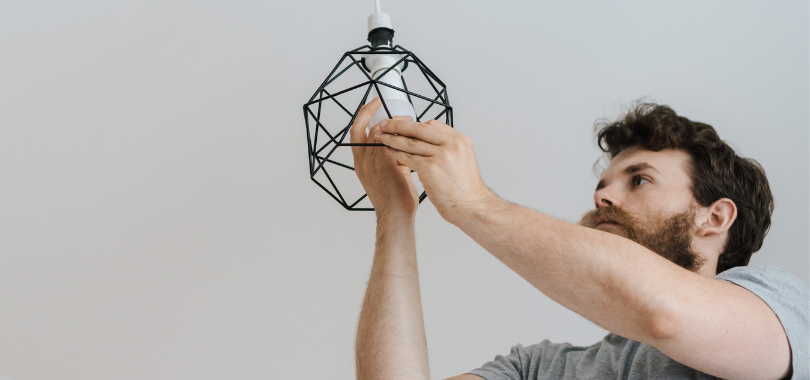Servitization: Selling Usability and Performance

Image Source: Anete Lusina | Pexels
Sell the mobility, not the vehicle! Sell the light, not the lamp! Sell the cooling, not the AC!
In a continuously changing market with intense competitiveness and constant shifts in the customer’s behavior, traditional manufacturers have to keep adapting and innovating to maintain their positions.
An innovative business strategy that shifts the traditional way of doing business is servitization, a process through which the producers go from a product based model to a Product-Service System (PSS). Companies are no longer producing and selling products alone. They are selling services, integrated solutions, and an overall greater experience for the end consumer.
According to Miying Yang and Steve Evans’ study on “product-service system business model archetypes and sustainability,” a generally agreed-upon way to classify the PSS is to include it in one of the following models:
- Product-Oriented – when the provider sells the product that ends in the buyer’s ownership. Other services such as consultancy or maintenance can be sold.
- Use-Oriented – when a business provides customers with the utility of a product while keeping its ownership. Examples are renting or leasing.
- Result-Oriented – when the company sells the results of a product or the value being delivered to the customer. The customer only buying the consumed light instead of lighting products is a relevant example of this typology.
To remain relevant in an always-evolving environment, companies should seize every opportunity to enhance their performance and obtain competitive advantages. Servitization is a win-win model benefiting all the involved parties that’s why an increasing number of businesses are approaching it.
Competing through advanced services is, first of all, an opportunity for growth and profitability as the revenue streams are more diverse. By offering complimentary ongoing services, the income gates certain stability due to recurring and incremental revenue streams.
The relations with the clients are strengthened as their satisfaction is increasing and their loyalty is drive-up. Greater alignment with the customer needs facilitates a long-term relationship and a better relationship with the customers means higher barriers to competition.
Using a servitization model can become an important source of insights for further innovation because providers are still connected to their service which eases the detection of improvements and can spark ideas for new services. Additionally, services are more labor-dependent and less visible which makes them more challenging to replicate and become a sustainable source of competitive advantage.
With all the above benefits also come challenges that companies face in their process to adopt servitization. The biggest problem results from the aversion to change. Old habits die hard while shifting towards servitization requires fundamental changes in the way companies are doing business, affecting every aspect from the strategic approach to everyday operations.
It is a time-consuming transition that needs to be done gradually to avoid putting pressure on the enterprise’s resources. Also, it requires adjustments in the existing capabilities, new technologies need to be deployed to support the services offered, and the employees need to develop related competencies. Customers’ perception is another challenge that companies face, as clients may be reluctant to adopt an unfamiliar servitized solution.
Selling Performance: Pay-per-lux and Power by the Hour
Philips Lighting, currently activating as Signify launched the ‘Pay-per-lux’ model, a ‘lighting-as-a-service’ offer for its customers. Signify handles the entire lighting service – design, installation, maintenance, and upgrades while the customers pay a monthly service fee for light. The program considers circular principles and uses advanced technologies like AI and the Internet of Things. In this model, Signify keeps the ownership of the lighting systems and offers a five-year performance contract, which is based on a series of key performance indicators such as light level, uptime, and energy savings.
The solution was first deployed for the National Union of Students from the United Kingdom. Signify is responsible for the lighting system for 15 years, while NUS pays a quarterly fee. As a result, the energy costs have been minimized while the technologies used are continuously updated, and annual checks are done to assess the system’s health and prevent maintenance.
Rolls-Royce manufactures engines for the aviation industry and implements a servitization model named Power by the hour through which customers have access to a service package by a dollar-per-flying-hour payment mechanism. CareServices solution offers a variety of services to customers such as engine monitoring to predict potential maintenance problems and ensure the aircraft is ready to fly on time, efficiency services to balance the low fuel consumption with optimized flight operations, asset and safety management solutions, in addition to world-class customer support.
The most recent service agreement has been signed with South Korean airline T’way Air. It will benefit from a service concept based on predictability and reliability that will secure the cost of operating, maintaining, and enhancing aircraft availability.
To sum up, there are many other companies from different industries that are moving their focus towards servitization. Even though it is not shielded from risk, the model can create significant benefits in relation to resource efficiency, growth, customer relationship, resilience, and impact on competitiveness. For a traditional manufacturer, a gradual transition from product commercialization to a servitize offering can become a decisive factor in its long-term sustainability.
To ensure a smoother transition from the traditional way of doing business to servitization, join the Certified Strategy and Business Planning Professional course offered by The KPI Institute. Develop the right plan and strategy for your business in achieving servitization. For further details, visit kpiinstitute.org.





